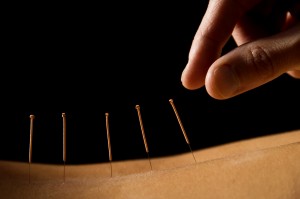 In recent times acupuncture has actually taken pleasure in a tremendous rise in popularity and approval. Just a few days ago, my mom called to inform me “Oprah’s talking about acupuncture on her show today!” Despite Oprah’s coverage, the questions I hear over and over once again about acupuncture inform me that what I do for a living is still not well-understood by everybody.
In recent times acupuncture has actually taken pleasure in a tremendous rise in popularity and approval. Just a few days ago, my mom called to inform me “Oprah’s talking about acupuncture on her show today!” Despite Oprah’s coverage, the questions I hear over and over once again about acupuncture inform me that what I do for a living is still not well-understood by everybody.
When I was asked to compose a post for a local paper about acupuncture, I decided that breaking common myths about acupuncture would be a good place to start.
Misconception # 1: Acupuncture needles hurt!
Compared to the needles made use of to take blood or provide medication, acupuncture needles are many times thinner, strong rather than hollow, flexible rather than stiff and rounded at the suggestion. An acupuncture needle is placed quickly with the skin’s surface area up until you feel tingling, heat or pressure in the area of the needle. After a few minutes, these feelings vanish and you are left sensation sleepy and deeply relaxed.
Misconception # 2: Acupuncture only works if you think in it.
While keeping a favorable attitude will most likely help you heal, how and why acupuncture works is not so easy. According to the National Institutes for Wellness (NIH), analyses have shown that acupuncture seems to impact the body’s immune reactions, blood pressure policy, blood flow and temperature, and might aid the activity of endorphins (the body’s own painkilling chemicals) and immune cells “at particular sites in the body”.
While most clinical studies on acupuncture do note that even “sham acupuncture” (in which an needle is not placed or not placed into a non-acupuncture point) appears to have a small restorative impact on the body, research study participants who get “genuine” acupuncture therapy regularly do better than those in the control group or those receiving traditional therapy.
Misconception # 3: Acupuncture is only good for dealing with discomfort.
It holds true that pain reacts very well to acupuncture. Low pain in the back, sciatica, neck discomfort, shoulder pain, tennis elbow, carpal tunnel syndrome, fibromyalgia, headaches and other sort of pain may all be dealt with successfully with acupuncture.
But due to the fact that the objective of acupuncture is to bring balance and consistency to the whole individual, it can likewise be an exceptional treatment for sleeplessness, fatigue, digestion issues, menopause, menstrual conditions, infertility, MS, Lupus, and a supportive treatment for clients with cancer, Hepatitis or HIV.
 Myth # 4: Acupuncturists aren’t licensed doctor.
Myth # 4: Acupuncturists aren’t licensed doctor.
This might have held true 35 years back when acupuncture first appeared in the U.S., however today acupuncture is a licensed, regulated career. A Google search of “acupuncture in healthcare facilities” discloses acupuncturists on personnel at a variety of medical facilities across the nation.
To be accredited in many states, acupuncturists need to finish a 3 to 4-year graduate program in acupuncture and Standard Chinese Medicine (TCM) and pass a series of national accreditation tests. Like other specialists, to maintain our licensure, we must contribute to our knowledge with continuing education, maintain national board accreditation and adhere to a stringent code of medical principles.
Myth # 5: My insurance will not cover acupuncture, so I can’t manage to attempt it.
Don’t be so sure about that! Where I practice, there has been an abrupt increase in protection for acupuncture therapy and there is presently a costs in congress (HR646) that would permit acupuncture to be covered by Medicare.
Lots of acupuncturists offer discount rates for elders, students or for multiple therapies bought at the same time. Community Acupuncture, a standard style of acupuncture treatment that enables patients to receive basic treatments along with other patients (completely outfitted, of course) at an extremely low expense, $15-$40 per visit.



